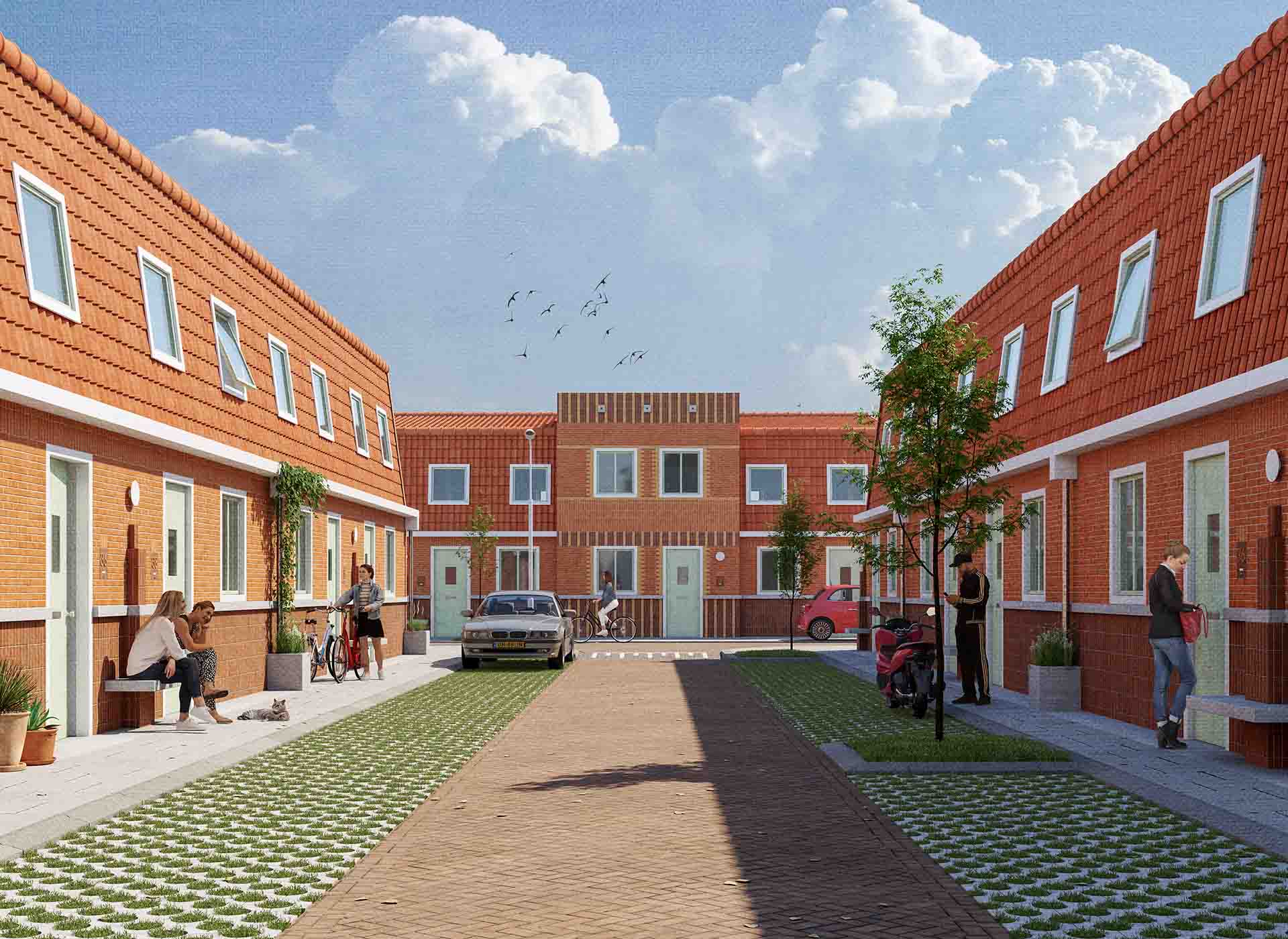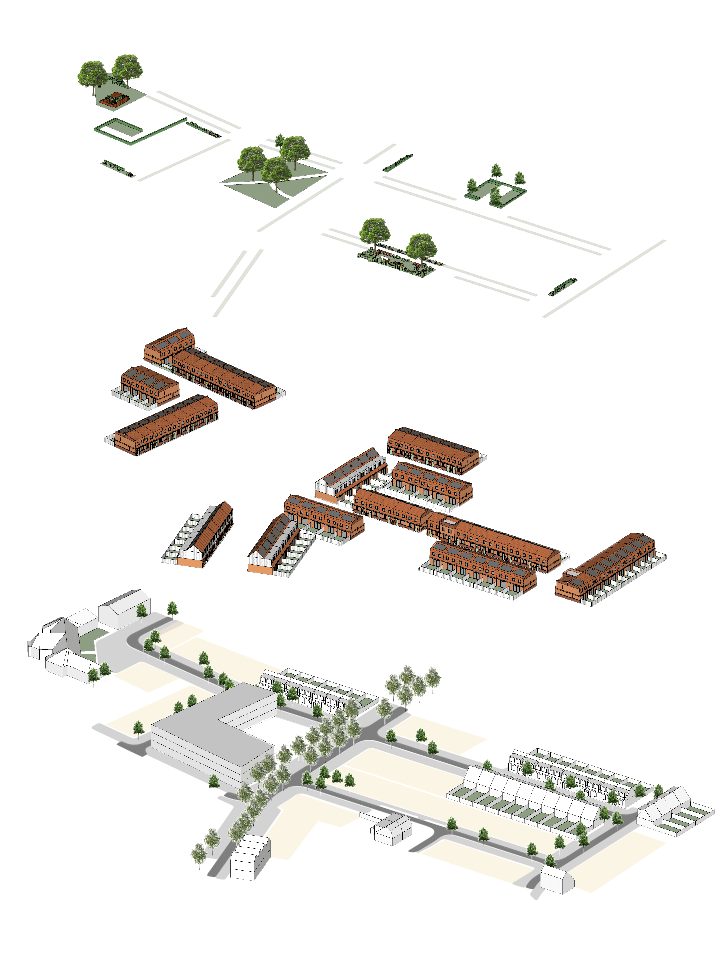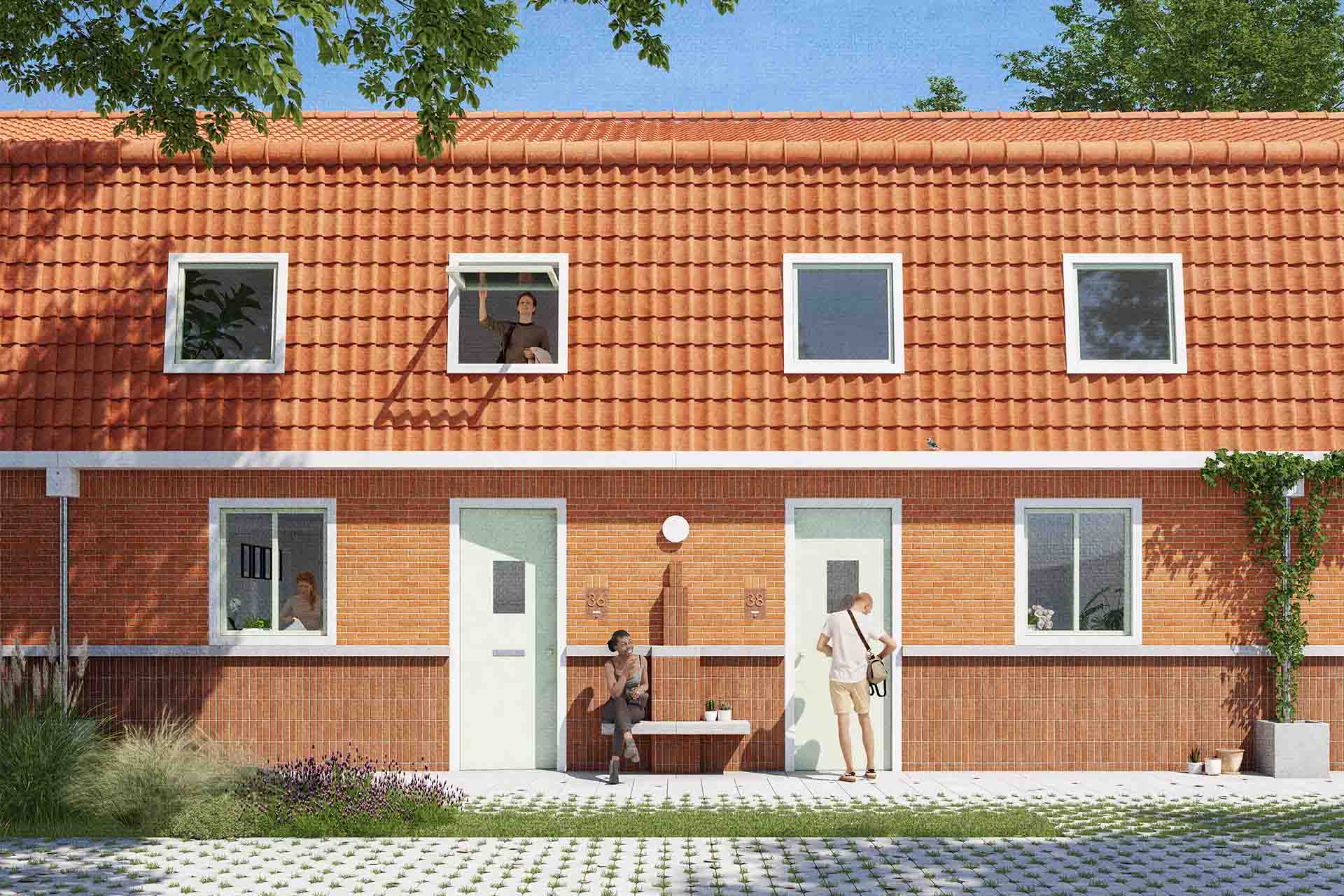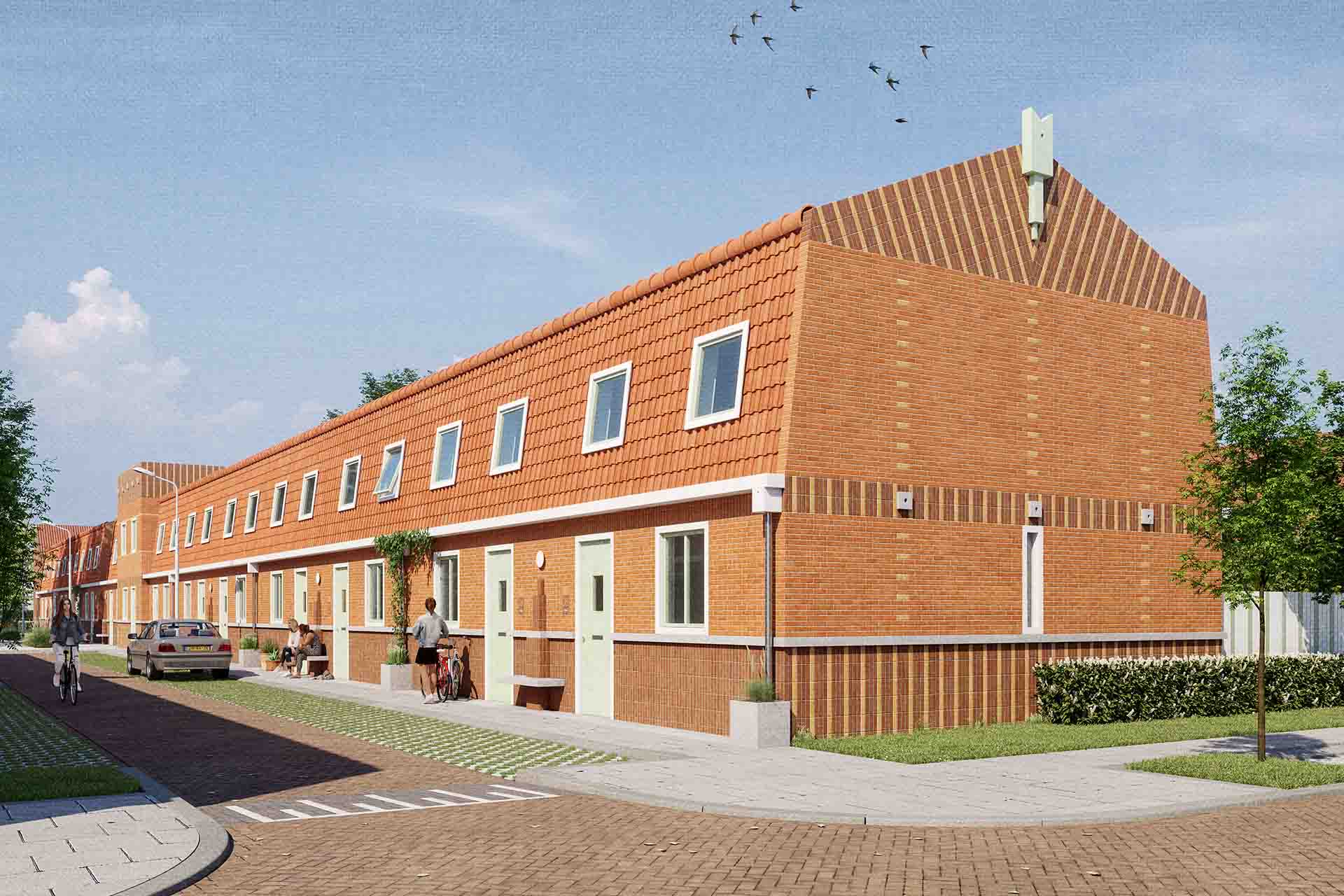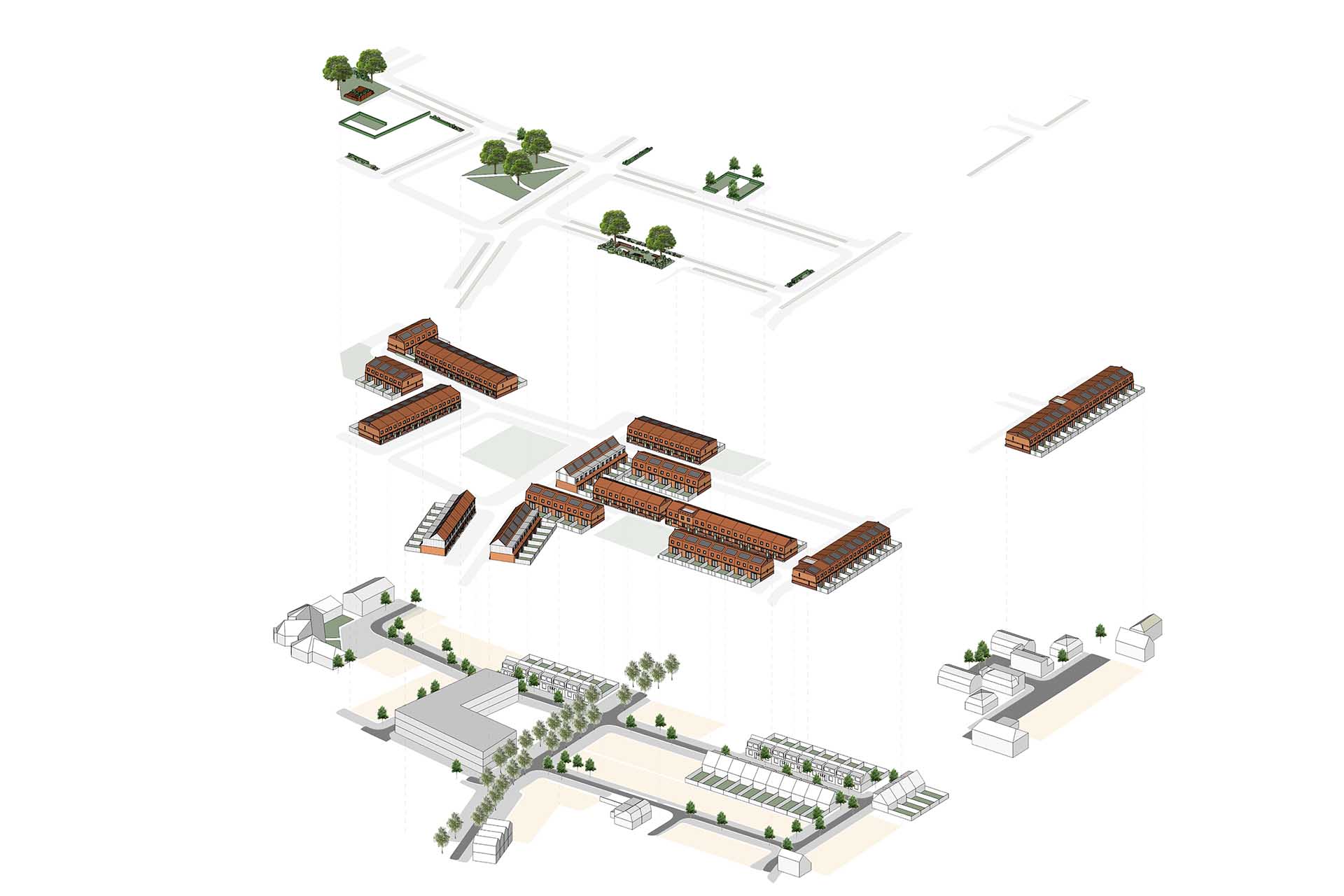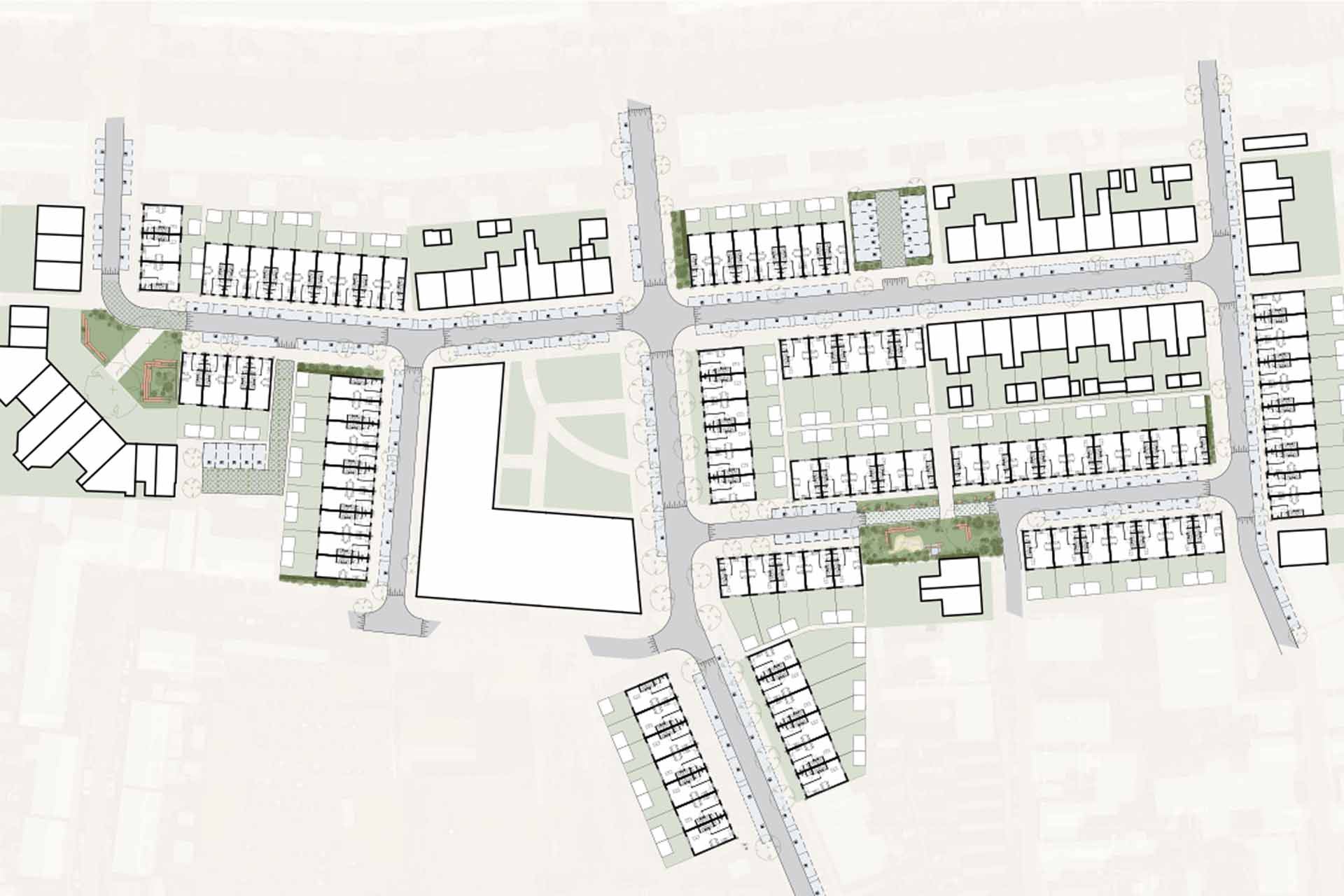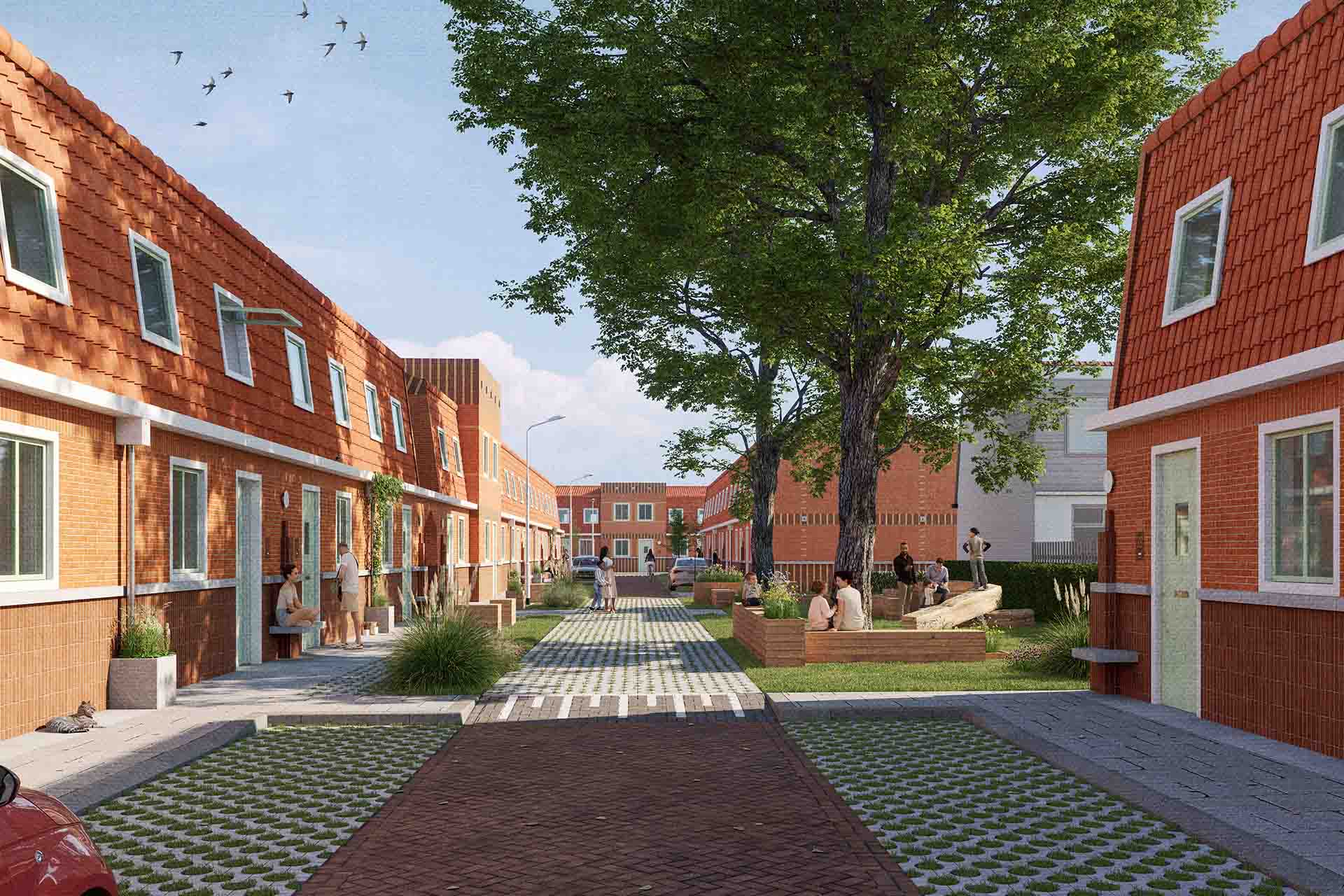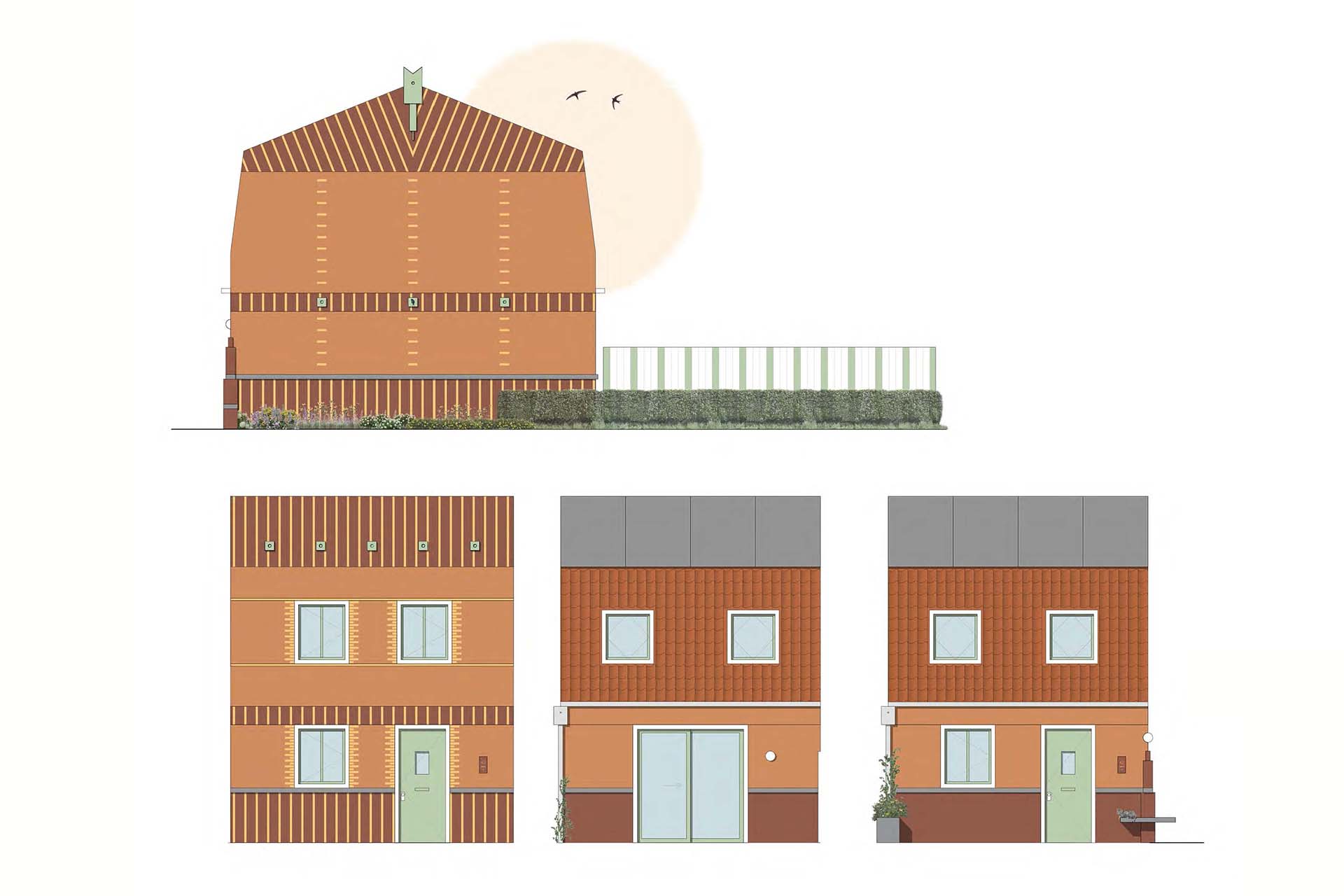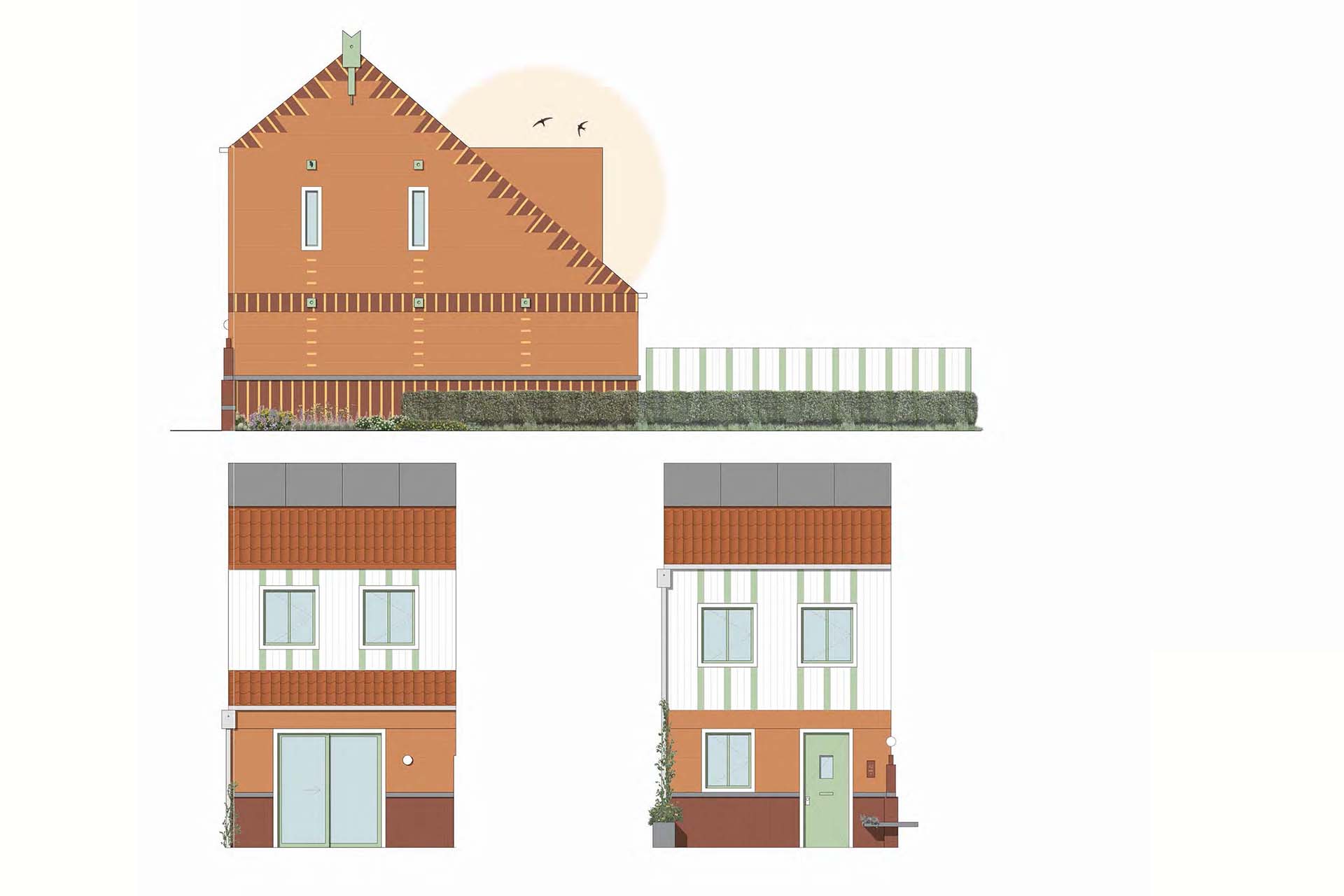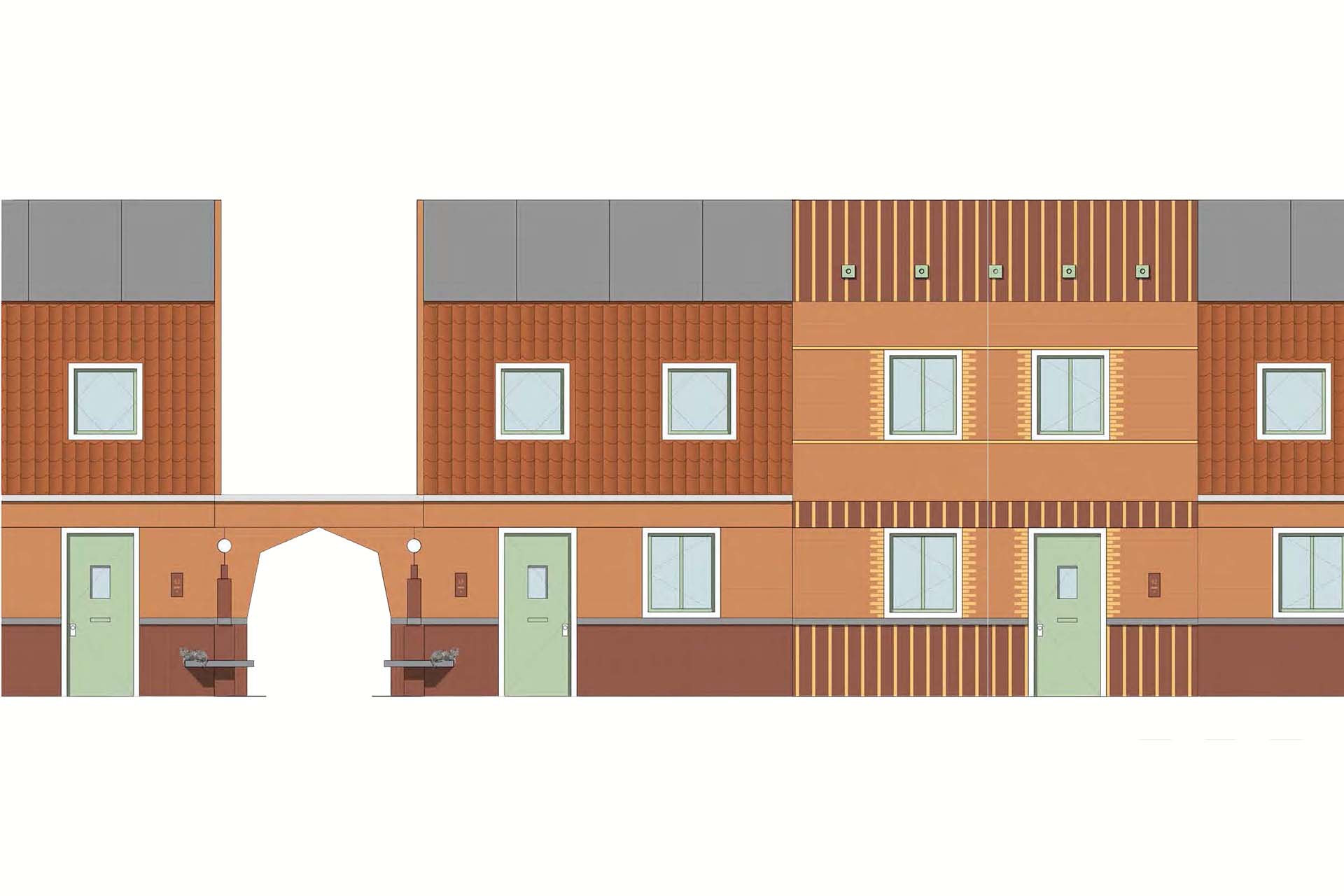A neighborhood shaped by details
ZOETMULDER, in collaboration with BAM wonen, has created a design vision for the Rosmolenbuurt, where small-scale design, climate resilience, and nature-inclusive solutions converge. The new homes blend harmoniously with the scale and character of the surrounding buildings. This is achieved through low eaves and mansard roofs, complemented by brickwork in warm tones of red, orange, and brown, visually anchoring the design with the neighborhood’s character.
The new housing brings a fresh impulse to Rosmolenbuurt, both in terms of urban design and socially. The design is based on standard housing types, complemented by ‘specials’, homes with unique shapes and decorative brickwork. These specials, positioned along sightlines and at street widenings, create landmarks that intuitively guide residents and visitors through the neighborhood. Side facades feature additional openings and nesting boxes, surrounded by wide hedges and blooming plants to enhance the neighborhood’s vibrancy and ecological value.
The design incorporates a range of climate-adaptive measures. Semi-paved streets improve water infiltration and orange roof tiles reduce heat absorption. Redesigned public spaces introduce more greenery, with natural street layouts and play areas under the trees on Leo XIII Street. Bird nesting boxes and hawthorn hedges integrated into the specials side facades provide habitats for house sparrows and swifts, establishing a full-fledged ecosystem. This green and inclusive approach ensures that Rosmolenbuurt is both sustainable and socially connected, ready to face future challenges.
For the Rosmolenbuurt a new prefab timber construction by BAM wonen was used to achieve a customized design. Diverse roof shapes, including mansard, asymmetrical, and flat roofs, and thoughtful details like built-in seating areas and decorative gates bring a sense of scale and cohesion. Locally sourced bricks in carefully chosen colours and patterns reduce environmental impact while complementing the neighborhood’s traditional aesthetic.
This approach results in a neighborhood where sustainability, comfort, and nature-inclusivity come together to create a safe and green living environment for the future.
